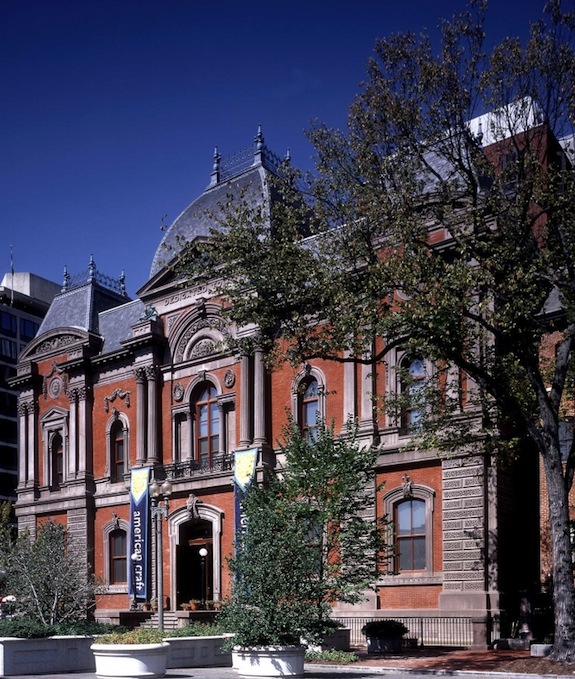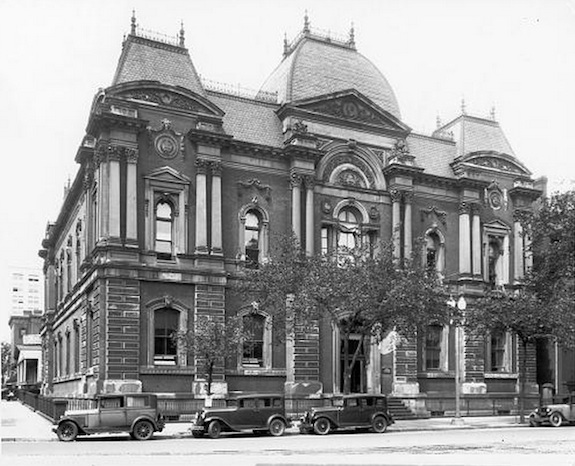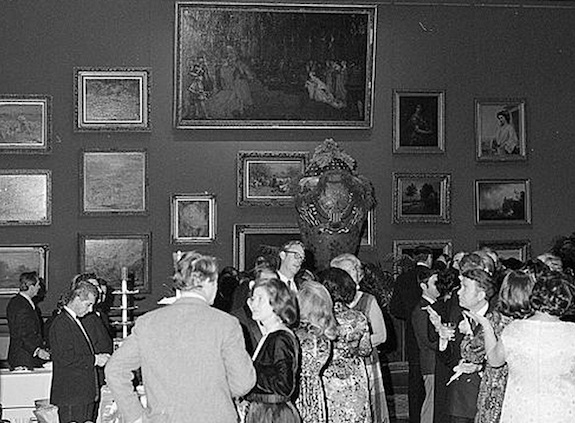The Renwick, the Grand Dame of Washington, Is Slated for Rehab
The historic 1859 art gallery, which has served many other purposes in its lifetime will undergo a two-year renovation
![]()

The Renwick was first designed in 1859 as one of the first buildings in America created specifically to house art. Photo courtesy of the Smithsonian
The American Art Museum’s craft and decorative arts building, the Renwick Gallery of Art, is in for a little craft and decorative rehabbing of its own. The historic building, located at the corner of 17th Street and Pennsylvania Avenue, will be closed for two years starting in early 2014 while a Cleveland-based team gives its infrastructure and historical details an upgrade.
Once called the “American Louvre,” the building was first designed in 1859 by architect James Renwick Jr. (who also designed the Smithsonian’s Medieval Revival style Castle) to house the art collection of William Corcoran. Renwick cleverly adopted European elements to American soil. His Corinthian columns, for example, featured cornhusks instead of the traditional acanthus leaves borrowed from ancient Greece. Known for its French Second Empire architectural style, the structure was also notable as one of the first constructed in America specifically for the purpose of housing art. Under the facade’s center pediment, the phrase “Dedicated to Art” stretches across the building.
Its construction, however, was interrupted by the Civil War in 1861, according to the historic structure report prepared by the Smithsonian Institution. From 1864 to 1869, the building served as the office headquarters for the Quartermaster General, where for the duration of the war, it provided storage space for records and uniforms. After the war, in 1871 Corcoran hosted a lavish ball to raise the funds for another high-profile project, the Washington Monument. Called the “most magnificent reception ever given in the United States,” the party was attended by President Ulysses S. Grant and musicians played in a special balcony accompanied by singing canaries in cages suspended from the ceiling.
In 1873, the Corcoran’s art gallery finally opened to the public, complete with a hall of bronzes and others for sculptures, as well as a main picture gallery.
“At last we of Washington have an Art Gallery!” wrote a correspondent in The Youth’s Companion in April, 1874. “The fact ought to rejoice every American.” For his generosity, Corcoran was admired almost as much as his gallery.
“You have never seen Mr. Corcoran, perhaps. You will see him presently, after we mount this wide, perfect staircase. There he is, a man handsomer than many a youth of twenty, with his bright eyes, finely colored face, white hair and beard, and beautiful smile.”
Finally able to serve as an art gallery, the building would again find itself diverted from its initial purpose.

Pictured in the 1930s, the gallery was then serving as a courthouse with its grand salon divided into a courtroom and a docket room. The niches on the second story that once held statues had been converted into windows. Courtesy of the Smithsonian Archives
As Corcoran expanded his arts empire, Renwick’s building shuffled hands. In 1898 it was rented and used again as government storage. Then from 1899 to 1964, the space served as the U.S. Court of Claims. After decades of renting the building, in 1964, the government finally bought the structure, paying $300,000.

Visitors attend the Renwick Gallery’s grand opening in 1972. Courtesy of the Smithsonian Archives
But in all that time, the building’s charms had faded and Congress was ready to raze the structure. But for the intervention of First Lady Jacqueline Kennedy and the Smithsonian’s Secretary S. Dillon Ripley, the building might have been lost. Ripley met with President Lyndon Johnson in 1965 and asked that the building be transferred to the Smithsonian Institution. In 1969, it was added to the National Register of Historic Places; and in 1972, after a lengthy restoration process, the former Corcoran gallery was opened once again, this time as the Renwick Gallery of Art.
Today, the structure stands as stately as ever; its Grand Salon is home to a collection of 70 works of art, dating from the 1840s to 1930 from the Smithsonian American Art Museum and its first floor galleries are filled with permanent collection of contemporary American craft. After the renovations, the museum will be the “first all-LED illuminated museum in the United States,” according to the Institution. Upgrades are expected to be completed in 2016.
/https://tf-cmsv2-smithsonianmag-media.s3.amazonaws.com/accounts/headshot/Leah-Binkovitz-240.jpg)
/https://tf-cmsv2-smithsonianmag-media.s3.amazonaws.com/accounts/headshot/Leah-Binkovitz-240.jpg)